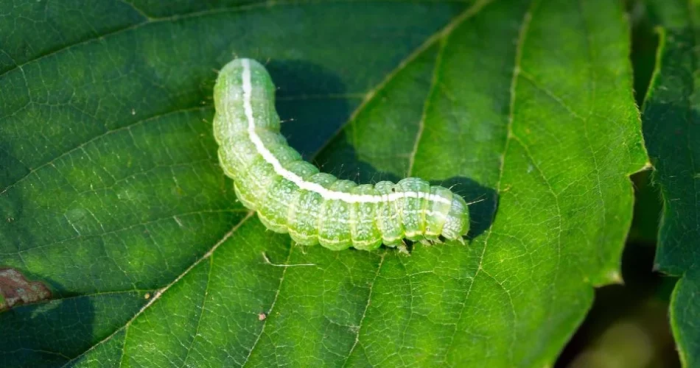
Effective remedies to eliminate green caterpillars naturally
Advice Advice
- 0
- 78
Known for their voracious appetite, green caterpillars can become a serious problem in gardens due to their rapid growth and lack of natural enemies. These pests, identified by their green, hairy bodies, can quickly destroy plants and therefore require swift and effective control measures. If you prefer eco-friendly solutions, here are some natural methods to effectively combat the green caterpillar infestation.
Green Caterpillar Identification Green caterpillars range from light to dark green and may be mottled. Their bodies are cylindrical with distinct heads and segments, and some have hairs or spines. These caterpillars generally respond to touch by curling up or swelling to appear larger and deter predators. They are attracted to plant leaves and often feed in groups, sometimes forming protective processions.
Natural methods to combat green caterpillars.
- Handpicking : Regularly inspect plants, especially sensitive ones like cabbage, for green caterpillars and their eggs, which are often found on the undersides of leaves. Handpicking these caterpillars is a safe and immediate way to reduce their numbers.
- Tomato leaf extract : Use a tomato leaf maceration as a deterrent. Soak 1 kg of tomato leaves in one liter of water for 24 hours, strain, and then spray the solution on plants to prevent egg laying.
- Tansy slurry : Effective against various pests, including the cabbage moth. A tansy slurry can be prepared by boiling 40 g of fresh tansy or 3 g of dried tansy per liter of water for 30 minutes. Allow to cool, strain, and water the affected areas with the solution.
- Rock dust : Apply rock dust to plants, especially after rain or dew, to prevent butterflies from laying eggs. This dust should be reapplied periodically, especially after rainfall.
- Mixed planting : Using different types of plants can confuse butterflies and discourage them from laying eggs. Planting herbs or tomatoes with strong scents can help mask the presence of host plants.
- Natural garden : Promoting a species-rich garden can foster a balance between beneficial and harmful insects and reduce the prevalence of green caterpillars. Natural garden predators, such as wasps and parasitic beetles, play a crucial role in controlling caterpillar populations.
- Protective Netting : Use garden netting to prevent insects from reaching your plants and laying eggs. Make sure the netting is securely anchored to ensure effective pest protection.
- Using natural predators : Identify specific species of green caterpillars in your garden and use appropriate natural predators. Species-specific parasitoids and beneficial insects, such as lacewings, can significantly reduce caterpillar numbers.
By using these natural strategies, you can effectively manage the green caterpillar population without resorting to harsh chemicals, protecting both the health of your garden and the environment.

